 Editor’s note: This story was originally published in Issue Four of Life & Thyme, The Winter Issue.
Editor’s note: This story was originally published in Issue Four of Life & Thyme, The Winter Issue.
Christmas Eve in New York City is electric. To be in the city during that special annual evening is like stepping inside a holiday song—as if the spirited vignettes of iconic carols have come vividly to life, that they’ve been written with this very place in mind (and as it happens, many of them have).
It’s a tornado of a night; millions of people scramble for last minute gifts, they run late for parties, they hop into taxis, heading off to one of the area’s overcrowded airports in hopes of making it home for the holiday. Some linger in front of Fifth Avenue shop windows, while others push past, huffing with the hypertension that can only come from the holiday season, and wheezing beneath the weight of their many shopping bags.
On street corners, chestnuts actually roast over open fires, strings of lights and evergreen boughs frame apartment building entrances, doormen dressed the part at the ready for their residents. Union Square and Bryant Park host the last hurrahs at their holiday markets. And in spite of the frosty December air, from Flatiron to Flatbush, from Rockefeller Center to neighborhood bars and bistros in every borough, there’s a vibrance, a sense of community—whether it be one of joy or even occasional frustration—that ignites the sidewalks, the subway cars and the corner bodegas.
Love it or hate it, it’s hard to deny that the big apple wears the holiday season well.
And on December 24 in the city’s Greenwich Village, tucked beneath an unassuming black awning on Waverly Place, Babbo Ristorante bustles. The reservation book is full, and it has been for a solid month. The restaurant’s bilevel focal points—center tables in both up and downstairs dining rooms from which servers discriminately retrieve cheeses and slices of fresh bread—each support its own elegantly decorated Christmas tree. Conversation hums beneath dim lighting, and the strings of small bulbs lead in tenderly illuminating the rooms. Guests scan menus, twirl delicate handmade spaghettini, sip warming barolos and settle in for an evening they’ve anticipated—in many cases—for the last 364 days.
This is the Feast of the Seven Fishes.
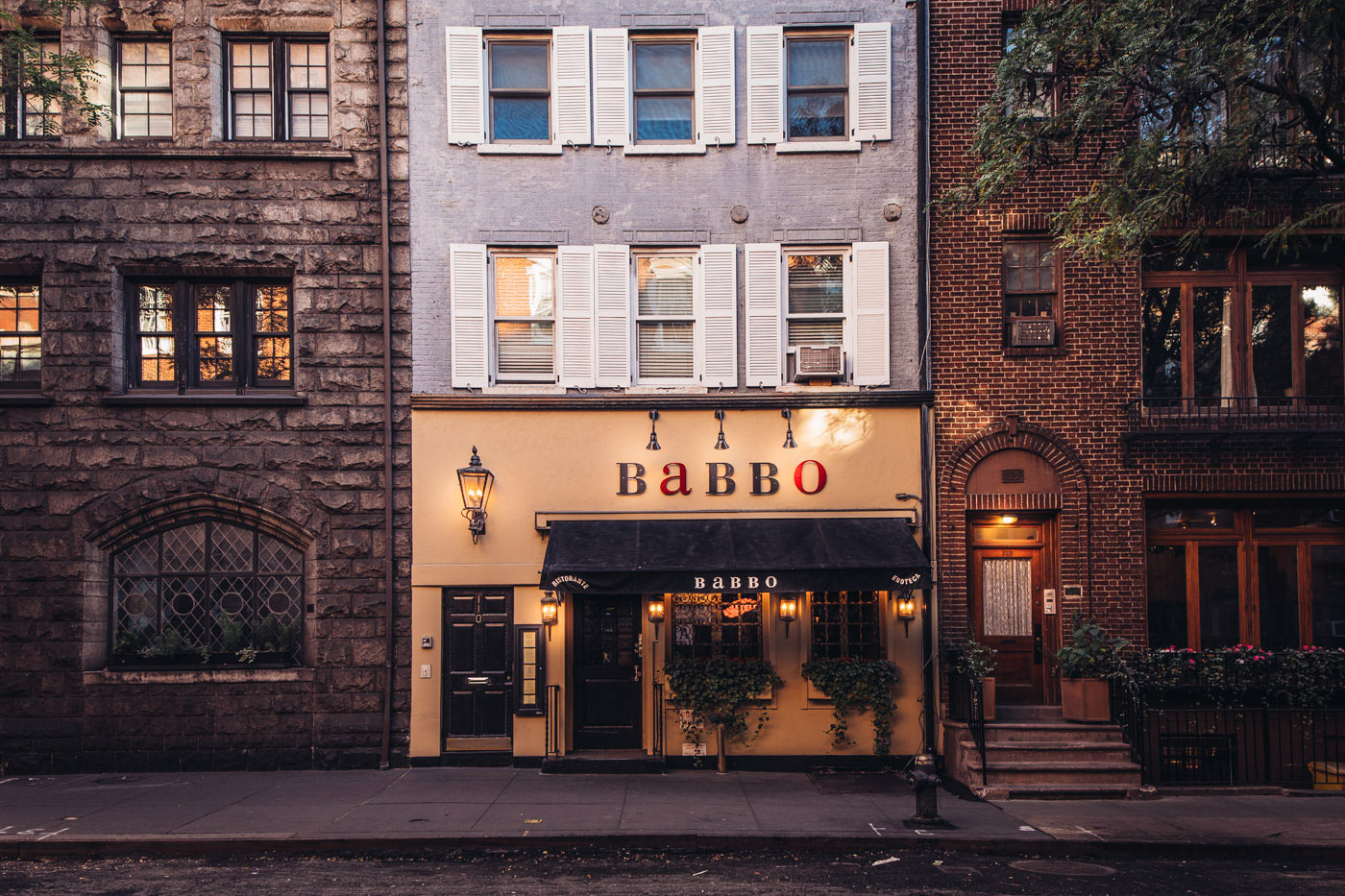
The Italian custom of the Feast of the Seven Fishes, or Festa dei Sette Pesci, wasn’t always named as such. In fact, to refer to the presence of fish at all is a bit of a redundancy. Italian Catholics simply weren’t allowed to eat meat (with the exception of fish) on Christmas Eve, being the night before a holy day, so really, it’s implied that seafood would be the centerpiece of the meal.
Instead, the meal was referred to as La Vigilia, or “The Vigil,”—the time spent waiting for the birth of the baby Jesus. In many families, it’s eaten in prelude to midnight mass, a succession of seafood dishes that provides sustenance before paying visit to their parish.
Speculation about the significance of the number seven ranges from the days of the week to the number of sacraments to the number of sins, but it’s not a hard and fast rule. Some families serve more than a dozen dishes—12 for the apostles, 13 if including Jesus—while others choose a more easily digestible number—three fishes (perhaps to represent three wise men or the holy trinity).
There’s also no set lineup. Instead, components of the feast—like most cultural traditions—have historically been subject to availability. And rarely does the banquet boast elaborate or extravagant seafood staples. Instead, it’s common to see scungilli and salt cod, smelt and squid. In my family, our vigil table is never found without linguini con vongole, or linguine with clams.
The selection of fish varies from region to region, year to year, but the idea is the same. At its core, it’s always an opportunity to reflect and to reunite, often with a central figure at the helm of the meal, assuming responsibility for feeding the gathering of loved ones. And at Babbo, that role is filled by Mario Batali and his team.
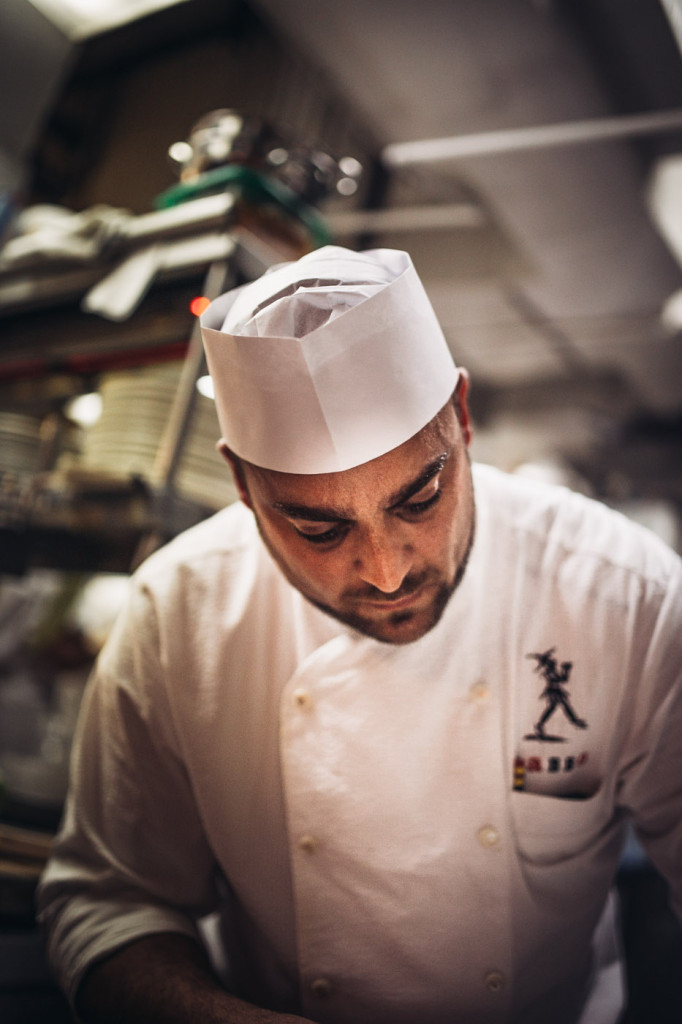
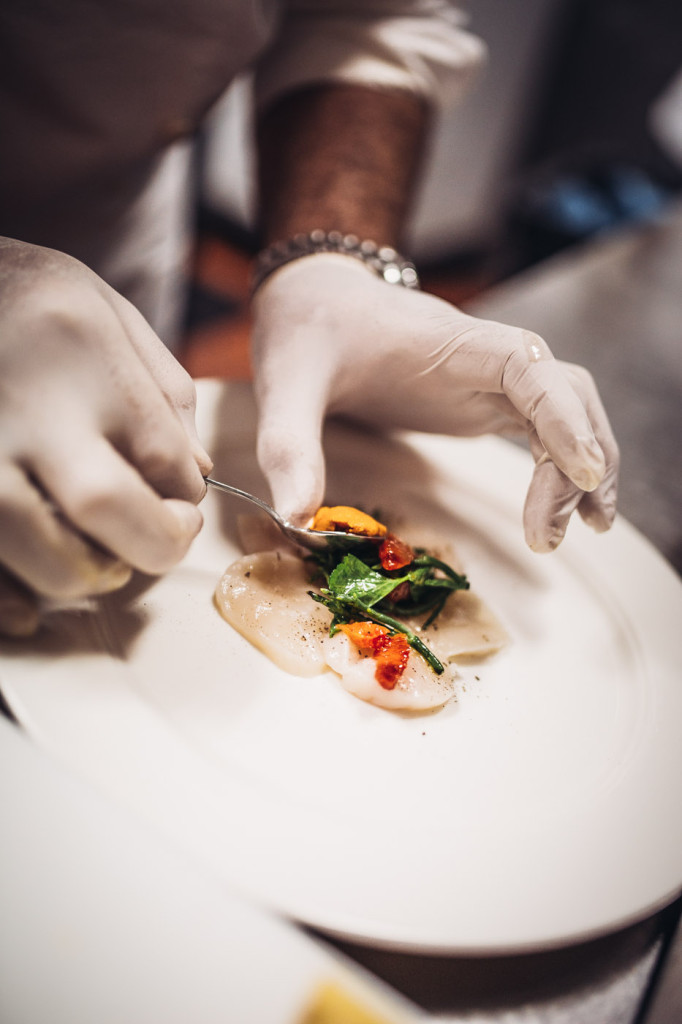
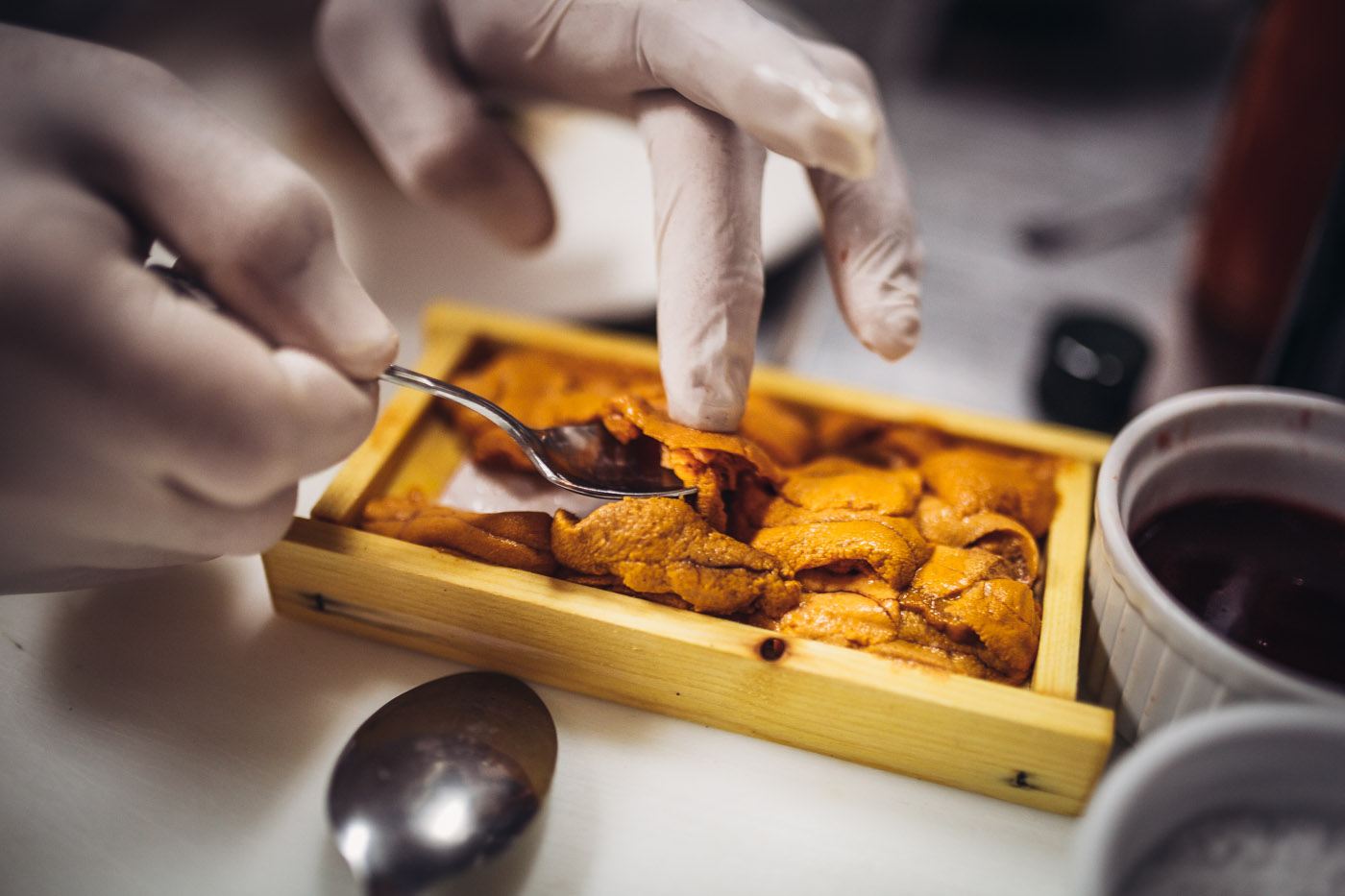
Above: Babbo Executive Chef Frank Langello preparing Sea Scallops with Salicornia and Ricci di Mare
—
“When you walked off the elevator into her apartment, she always had what smelled like old socks and cabbages being boiled, which was baccala,” Batali remembers, sitting at one of the as yet untarnished white clothed tables in the upstairs dining room at Babbo before dinner service. “We always thought that is the nastiest smell. She would do it in a tomato sauce, and serve it over soft polenta,” Batali gestures, recounting early memories of his family’s own Feast of the Seven Fishes.
Batali recalls courses beyond the baccala (a salt cod)—which he speculates was one of his grandmother’s favorites, along with eel and scungilli salad. “We’d always have eel, and she’d do ravioli; it was very simple. I don’t remember if it was seven or 13 [dishes], but there was always a lot of the antipasti. That was when scungilli was around, the mussels with hot and black pepper, called cozze impepata.”
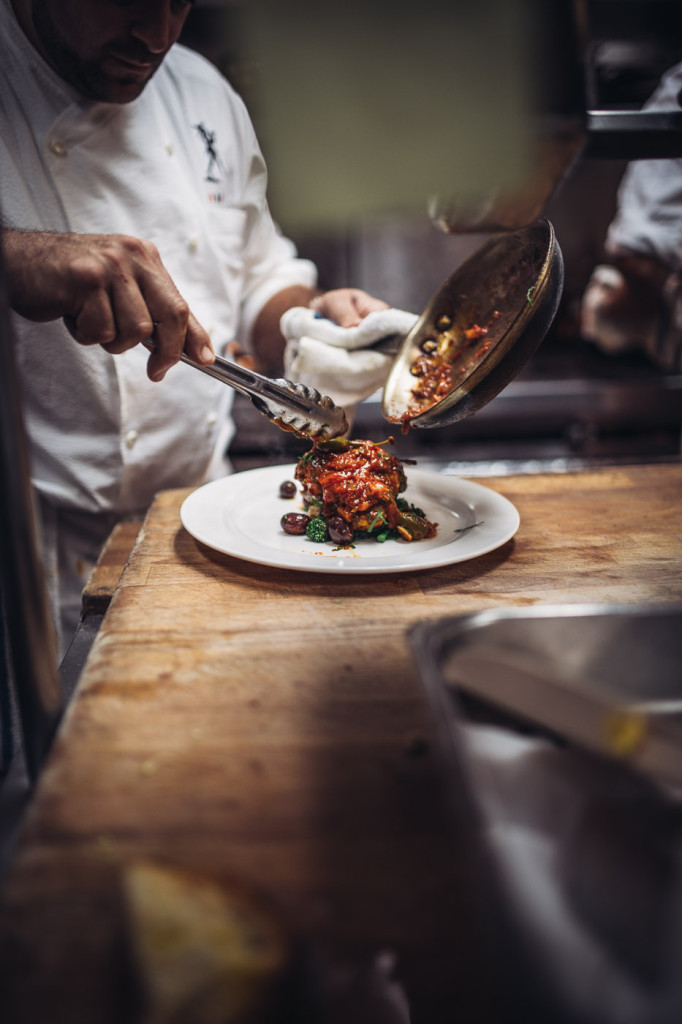
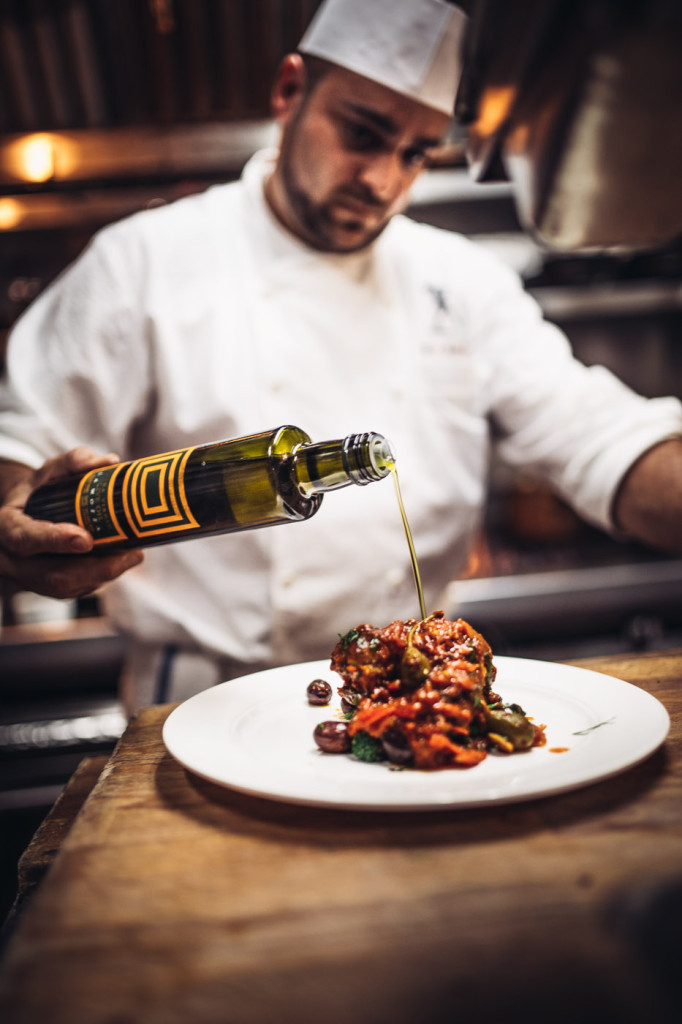
But while each dish calls up a fond association, Batali asserts they enjoyed these family meals despite the occasion. “Grandma’s house was always a special meal, whether it was a sunday supper or a holiday thing. We weren’t that tuned into thinking [the feast] was special, that was just always the way we grew up. We didn’t think, ‘Oh, this is some amazing, gastronomic, historical or important situation.’ No. We were just going to grandma’s, and this was the meal that everyone eats all over the place.”
And though it may not have struck him as special at the time, the feast has since become something of such significance that many of his restaurants participate in some way. The Theater District’s Esca and Chelsea’s Del Posto both curate all-fish Christmas Eve tasting menus, while Otto Pizzeria in Greenwich Village offers a more accessible option throughout the month of December—all seven fishes in a single antipasto.
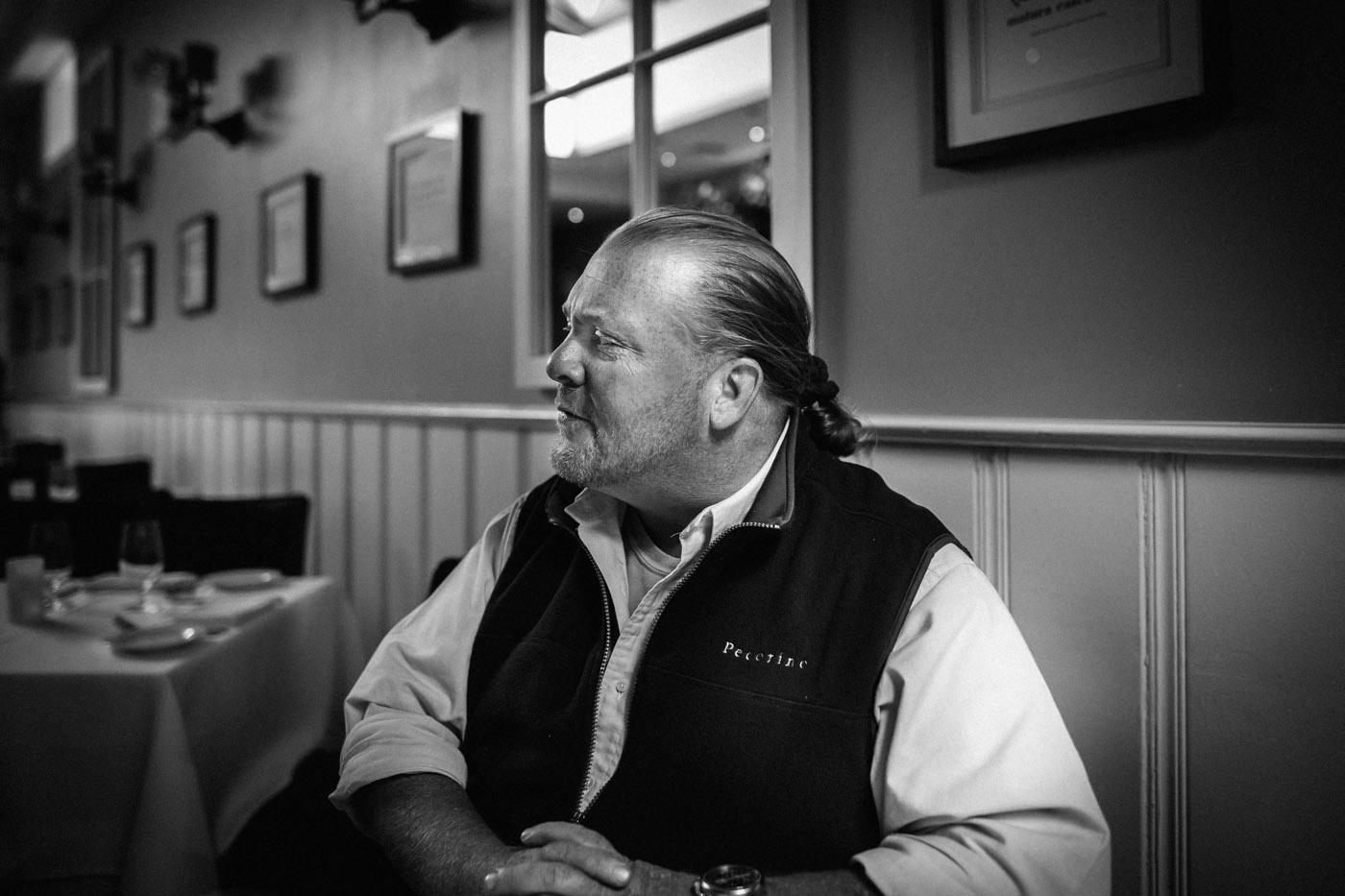
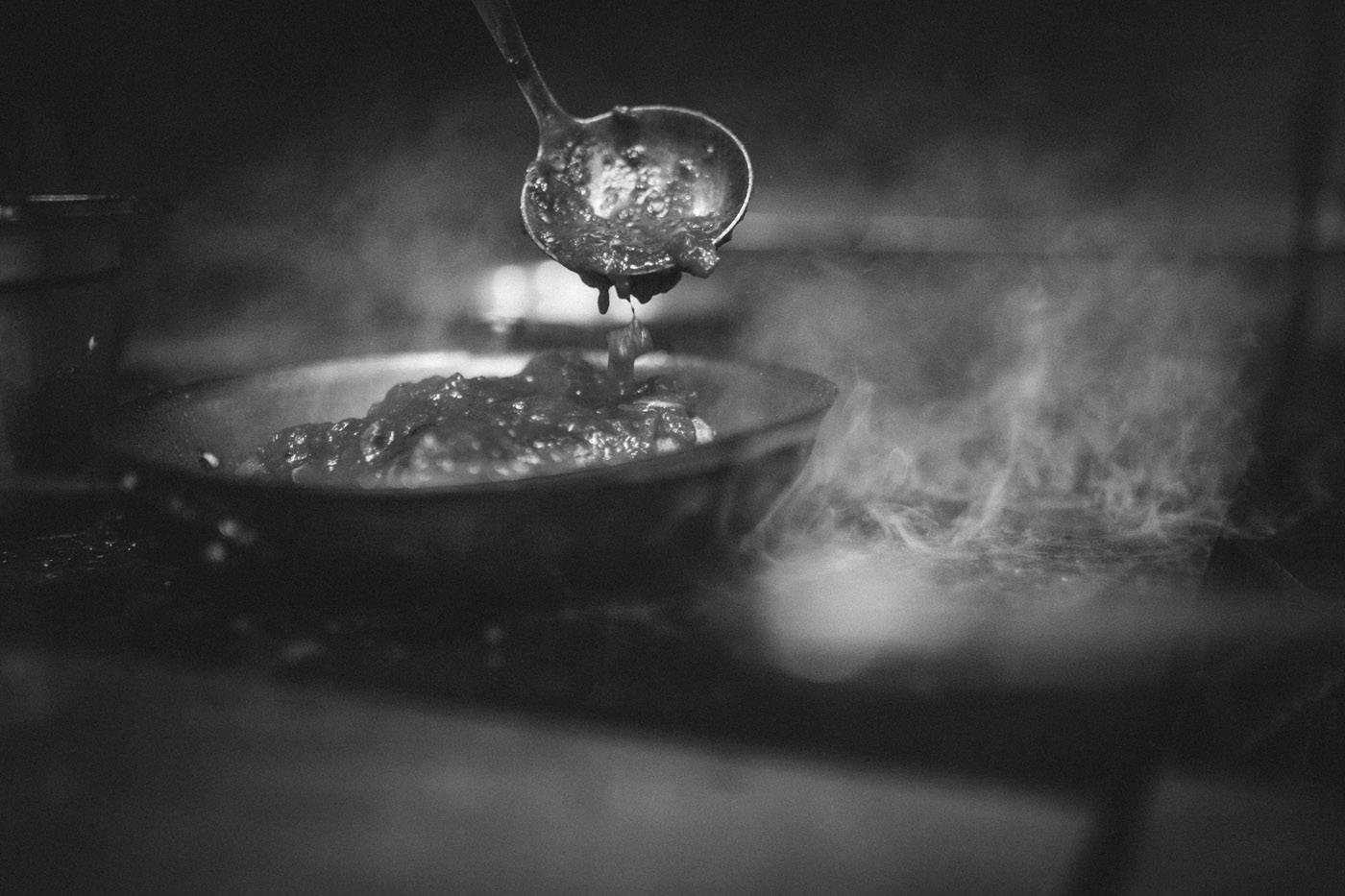
Having been so instrumental in instilling an appreciation for the tradition in and around New York, I’m curious what caused it to become such a dearly held ritual for him, and why he decided to share it with the city.
“For us, it’s as much a celebration of the true Italian tradition as the Italian American tradition. [It] represents something that is bigger than our table, bigger than our family,” Batali explains. “It’s the Italian culture and a celebration of that—along with the Catholic or Christian holiday. It’s something that makes people feel really involved and included.”
And the city has resonantly responded to that inclusion. On any given night at Babbo, a multi-course tasting menu is available, but Batali estimates that on Christmas Eve more than 80-percent of the people order the feast—about half of them regulars returning for the occasion.
Though his at-home traditions today are a bit more restrained (He takes a moment to mentally tally the number of family members grandma cooked for, settling on 18 to 20 as the final estimate. His own holiday table, he says, is much more manageable with about five.), he details them with no less enthusiasm. “At my house, we have the feast of the four fishes. Because no one wants to eat a seven course meal! So we do linguini with clams, and I make sure we have a whole rombo, which is turbot. I roast that, and then for antipasto we have fried rock shrimp—like Nobu makes—and we have crab claws. It’s the perfect meal. It’s so heavenly.”
The “heavenly” customs in the Batali household extend beyond the vigil meal as well. Breakfast on Christmas morning is a panettone gifted to his family by Philadelphia chef Marc Vetri. “He makes the greatest panettone I’ve ever tasted,” Batali raves. “He sends it to my house and that is our Christmas morning thing; we serve it with mascarpone and homemade jam and a little caviar. And then we have a box of the little mandarin oranges, because that’s what my grandmother used to send us. We eat about 10 of those each, and we’re just so happy.”
I’m curious if Batali’s sons have accepted the torch when it comes to cooking. “On Christmas Day we have a ham, and then the next day we take that leftover ham and make a tortellini, so everyone gets involved in that,” he explains. It’s a routine that started 10 years ago, when his sons were eight and nine, respectively. And while they do participate, the effort is a communal one on behalf of the entire group. “When everyone gets to work on something—like making tortellini—it’s a lot of fun,” Batali says. “We make a broth from the ham bone—oh, it’s so delicious.”
His favorite dish of the holiday now? “Anything anyone else makes,” he says with a laugh.
——
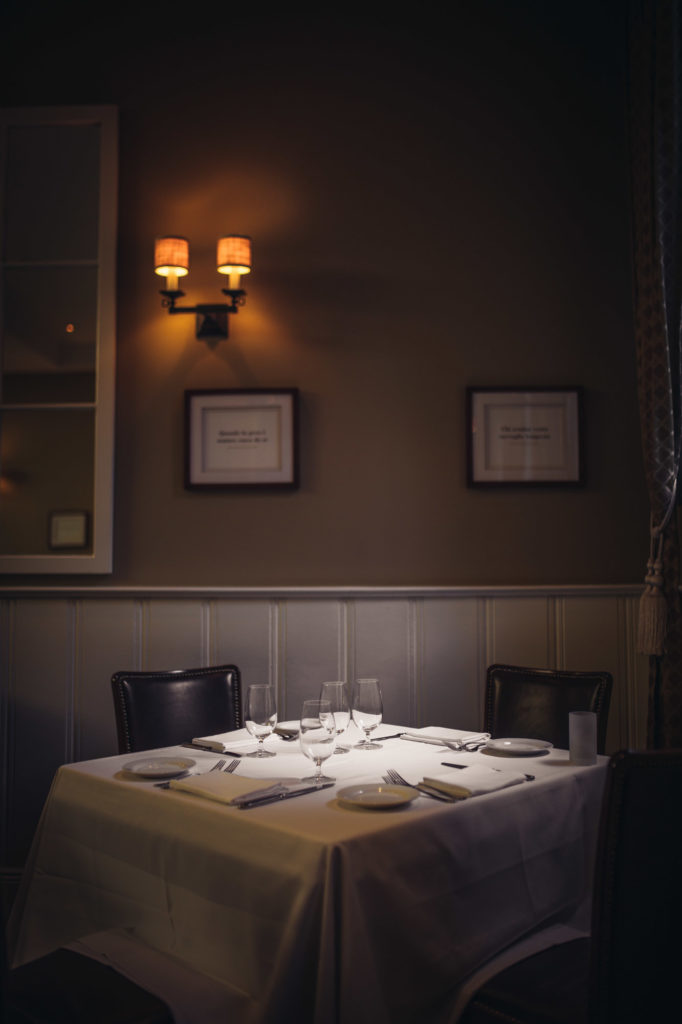
“Eat this,” Batali tells us, as Babbo Executive Chef Frank Langello delivers us dish after dish. Langello has been with the restaurant for 16 years. The menu at Babbo on December 24 changes slightly each year, based on what ingredients are available and exciting to the team, and he prepares for us some of what he has in mind for this year’s feast. Among them, a sea scallop dish, served raw with salicornia and ricci di mare—melting morsels of mustard-colored sea urchin. A black spaghetti arrives with baby octopus, green chilies and mint, and of course, the eel livornese braised in tomato sauce with anchovies, garlic, onion, caper berries, chili flakes, olives and served over broccoli rabe.
“Seriously, eat it all,” Batali says emphatically. And we don’t squabble.
Though the meal itself will in fact include seven fishes, they’re consolidated over four courses: an antipasto, two pastas, and a main. “All of it’s inspired [by meals growing up],” Batali explains, “But some of it we’d never seen before.” For example, the Nantucket Bay scallops rapidly disappearing from the dish before us. “Sea urchins? We didn’t really have those when I was growing up, but I love them now.”
And then, of course, there’s dessert. “Christmas Eve specialties!” Batali exclaims, which means sweets like sfingi—a fried and sugared, doughnut-esque dessert—and ubiquitous holiday favorites like roasted chestnuts in addition to plated courses, which in recent years have included date and walnut budino, and a vanilla and apple panna cotta.
——
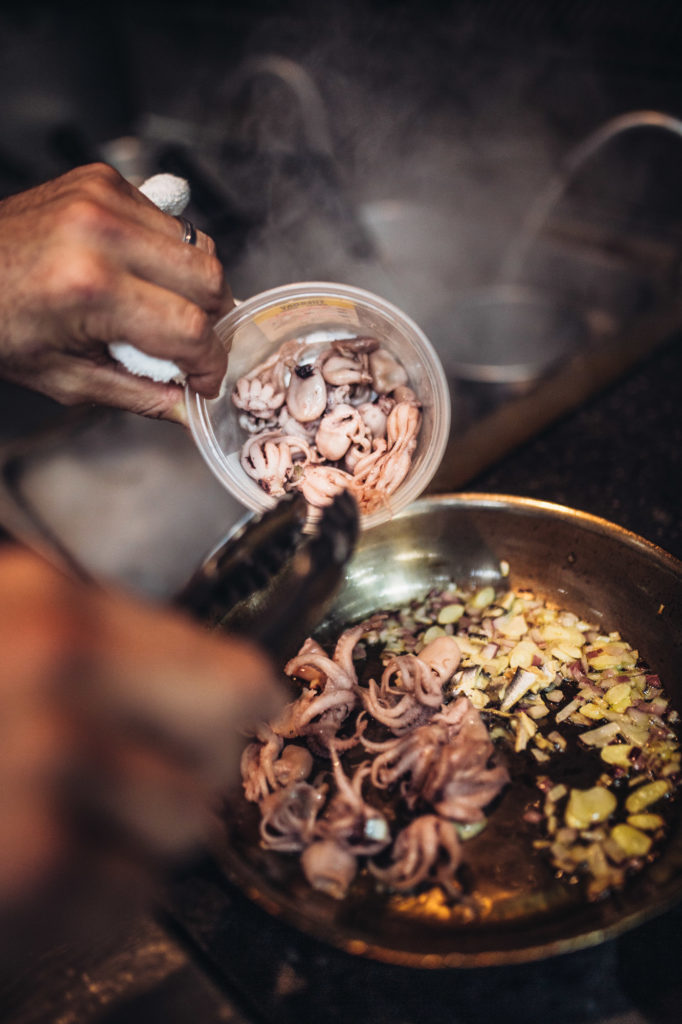
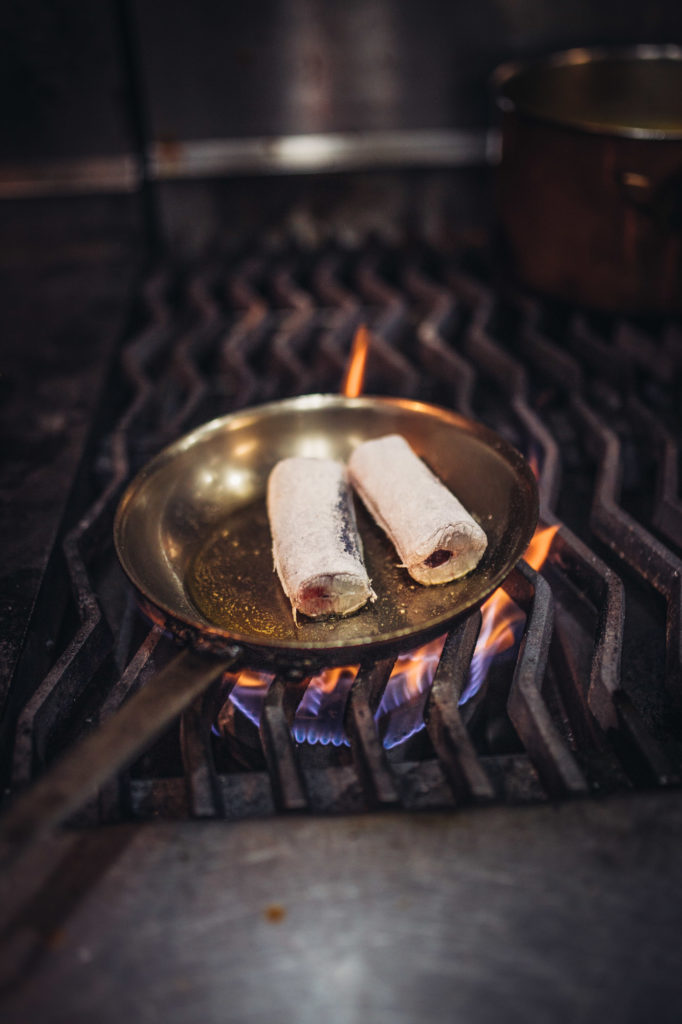
In New York City, where many residents are transplants, “I’ll Be Home for Christmas” is a catchy carol, but hardly a realistic concept. It’s far simpler to schedule a FedEx pickup of presents than to fly off during the height of a hectic travel season in an effort to stick to Bing Crosby’s promise of being home for the holiday.
The challenge can sometimes be disappointing, and the city that never sleeps is constantly required to dream up new ways to stay connected—to family, to heritage, and to tradition. For 16 years, Babbo Ristorante has been a conduit for those connections.
The feast is both a Babbo tradition, and an Italian-American one, but being of Italian descent is not a prerequisite to enjoy the meal. For the people huddled around candlelit tables with leather-bound menus each Christmas Eve, it is thanks in large part to the longstanding, Michelin-starred restaurant that it also a New York tradition.
Batali points out synergies in both New York City and Italian mentalities, parallels that make the custom an easily transferrable one. “One of the beauties of the Italian culture is if you want to join it, you can do it on any level. With Italians, if you even have three words in you they think you speak Italian. So they’ll talk to you in Italian, they’ll embrace you, they’ll give you a hug—and it’s very much like that in New York too,” he says.
And though Batali himself isn’t in the city for the feast (his family spends the holiday at his home in Michigan), for the staff at Babbo—one that includes loyal, long-time members like Langello and pastry chef Rebecca DeAngelis, who has been with the group for eight years—the Feast of the Seven Fishes is not only a part of their job, but a holiday tradition of their own.
“Having grown up in an Italian family in Philly, I’ve been doing the Feast of the Seven Fishes for as long as I can remember. I remember cooking and frying fish as a kid,” Langello says of his own upbringing. “I’ve now been doing the feast at Babbo since the the restaurant opened, almost 20 years. It’s one of my favorite nights of the year here.”
Creating and serving the meal is something they enjoy and take pride in, one that they share among their team, along with the regular customers of the feast—both of which have become family over the years. “It’s nice to continue the tradition with our customers. And I’m back with my kids on Christmas morning,” Langello continues.
Babbo itself feels an especially appropriate setting for a holiday; there’s a romance about the restaurant. Perhaps it’s in particulars that more recently opened establishments have eschewed—white tablecloths, waiters who expertly crumb between courses, staff members wearing white collared shirts and ties—whereas younger fine dining restaurants have opted for hipper, less formal details. There’s an adherence to tradition in the day to day of their operations, and an elegance to the experience that especially befits the season.
In the magic and the mania of a New York City Christmas Eve, there’s a warmth to knowing there’s a table waiting on Waverly Place, one that shrinks down the experience of the major metropolitan holiday, that makes it intimate. Guests, side by side, enjoying the same dishes as neighbors, finding their comfort and joy in the ritual, making family out of familiar faces like Langello and the rest of the Babbo staff. Whether true New Yorkers, or out-of-towners that turn the city visit into their annual holiday pilgrimage, the tradition makes dinner in the big city feel like a shared meal in a small village.
And thanks to Batali and company at Babbo, each year a group of New Yorkers, regardless of whether they find themselves near or far, exclusive of circumstance, will always feel at home for the holiday.
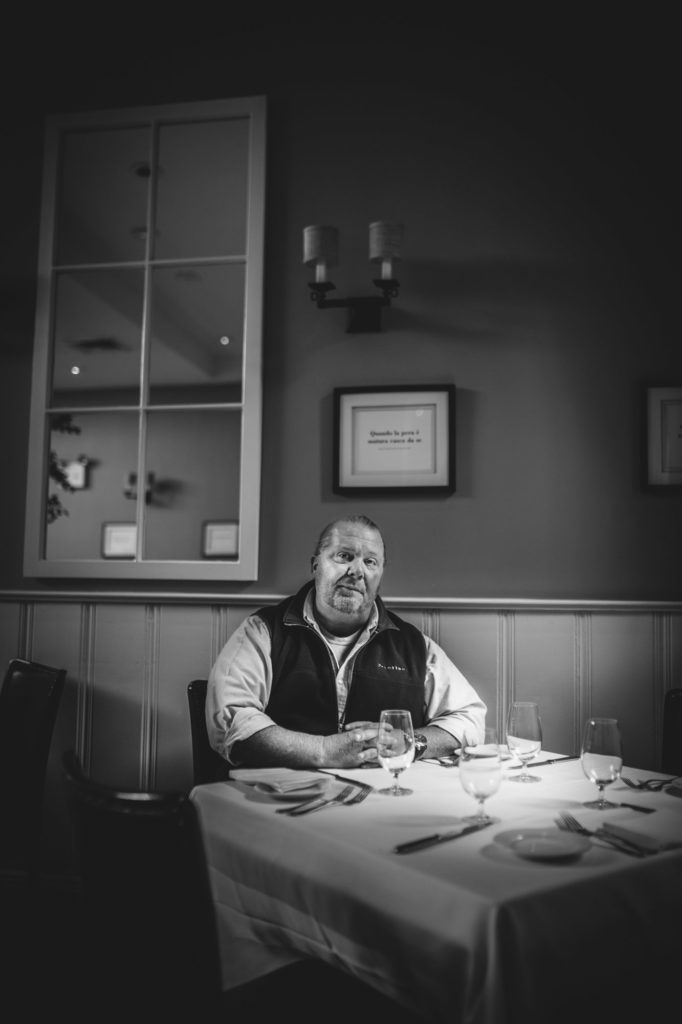





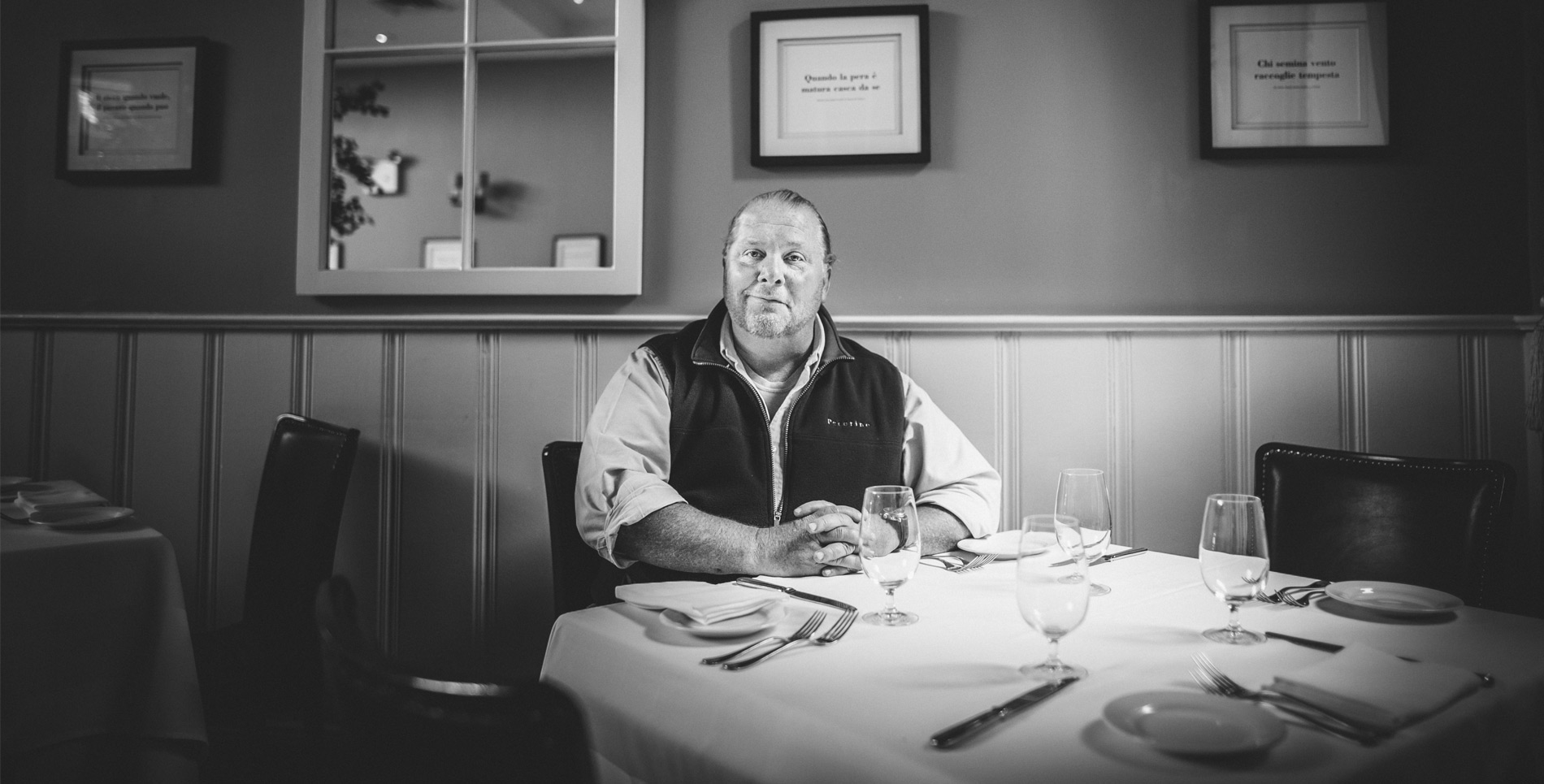

Our comments section is for members only.
Join today to gain exclusive access.